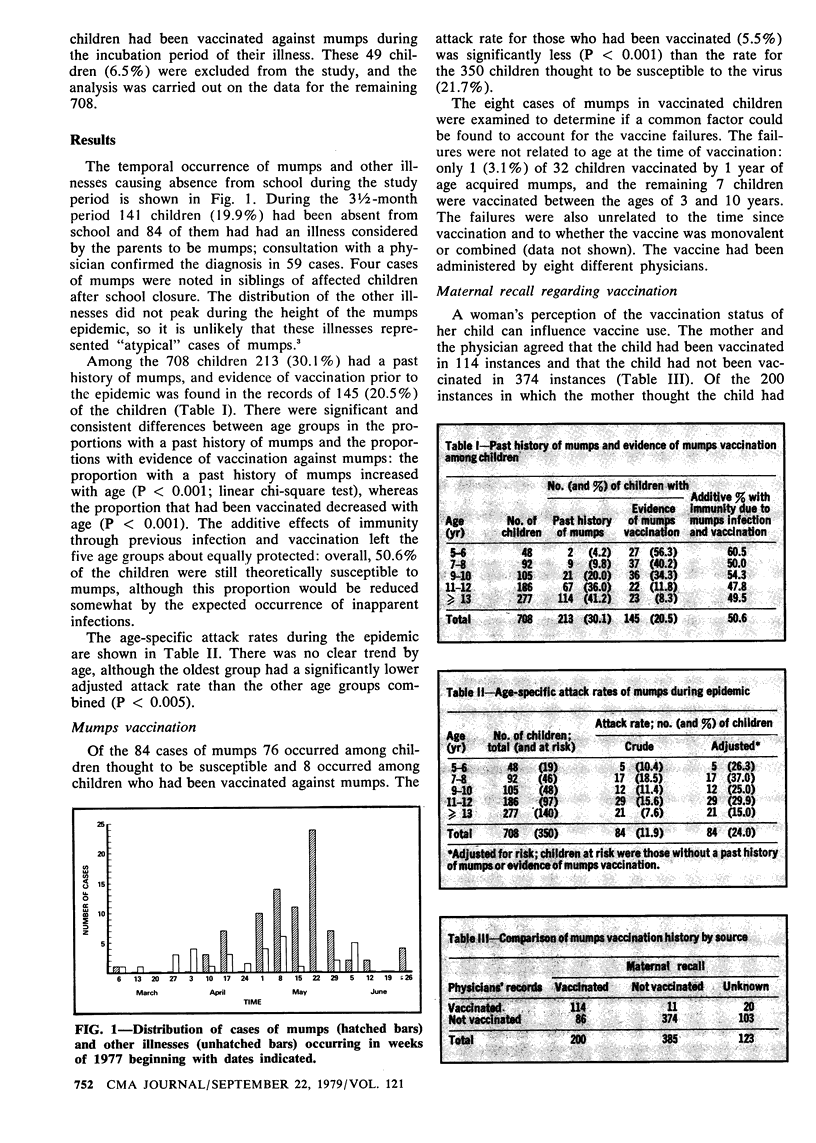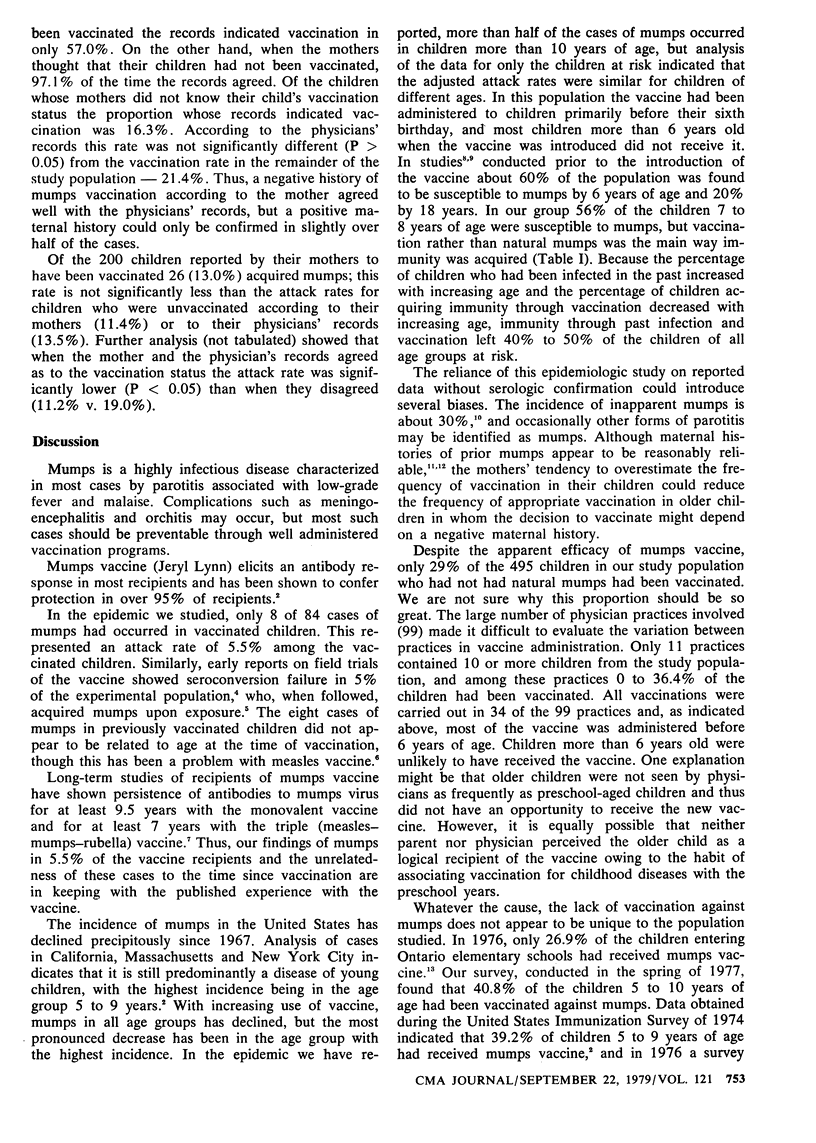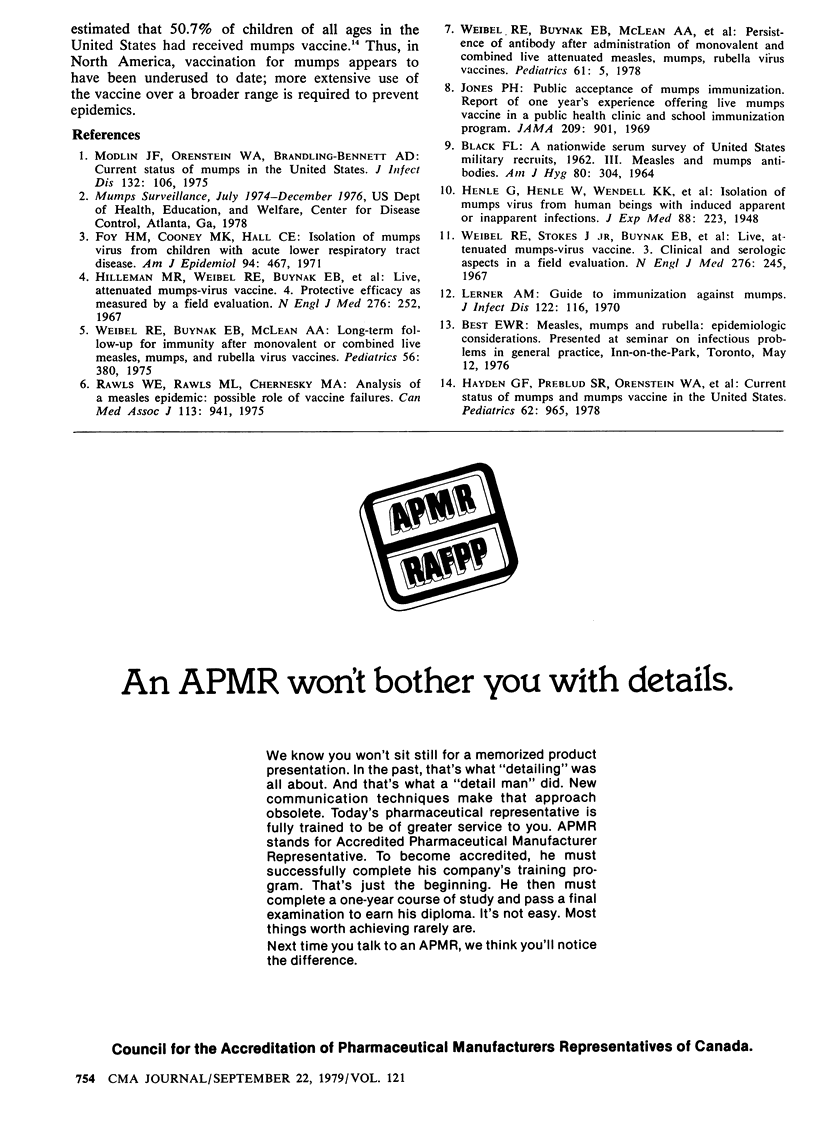Abstract
The incidence of mumps in vaccinated and nonvaccinated schoolchildren was studied after a recent epidemic. Information was collected by telephone interviews with the parents and a review of the physicians' records. The vaccine appeared to be effective, for the incidence of mumps in the 145 vaccinated children--5.5%, or 8 cases--was significantly less (P less than 0.001) than the incidence in the 350 children considered susceptible to infection--21.7%, or 76 cases. The percentage of children who had been immunized decreased with increasing age, and acquisition of immunity through natural infection had the reverse trend; thus, the proportions of children susceptible to infection in each age group were about the same, and the age-specific attack rates were similar. Although the mothers were accurate in indicating absence of vaccination, they incorrectly indicated vaccination of their children 43.0% of the time; this error in reporting could influence vaccine administration in older children. Our findings suggest that mumps vaccination may substitute for natural illness in immunizing populations, and that more extensive use of the vaccine over a broader age range is required to prevent similar epidemics in the future.
Full text
PDF



Selected References
These references are in PubMed. This may not be the complete list of references from this article.
- BLACK F. L. A NATIONWIDE SERUM SURVEY OF UNITED STATES MILITARY RECRUITS, 1962. 3. MEASLES AND MUMPS ANTIBODIES. Am J Hyg. 1964 Nov;80:304–307. doi: 10.1093/oxfordjournals.aje.a120479. [DOI] [PubMed] [Google Scholar]
- Bennett A. D., Modlin J., Orenstein W. A., Brandling Current status of mumps in the United States. J Infect Dis. 1975 Jul;132(1):106–109. doi: 10.1093/infdis/132.1.106. [DOI] [PubMed] [Google Scholar]
- Foy H. M., Cooney M. K., Hall C. E., Bor E., Maletzky A. J. Isolation of mumps virus from children with acute lower respiratory tract disease. Am J Epidemiol. 1971 Nov;94(5):467–472. doi: 10.1093/oxfordjournals.aje.a121343. [DOI] [PubMed] [Google Scholar]
- Hayden G. F., Preblud S. R., Orenstein W. A., Conrad J. L. Current status of mumps and mumps vaccine in the United States. Pediatrics. 1978 Dec;62(6):965–969. [PubMed] [Google Scholar]
- Hilleman M. R., Weibel R. E., Buynak E. B., Stokes J., Jr, Whitman J. E., Jr Live attenuated mumps-virus vaccine. IV. Protective efficacy as measured in a field evaluation. N Engl J Med. 1967 Feb 2;276(5):252–258. doi: 10.1056/NEJM196702022760502. [DOI] [PubMed] [Google Scholar]
- Jones P. H. Public acceptance of mumps immunization. Report of one year's experience offering live mumps vaccine in a public health clinic and school immunization program. JAMA. 1969 Aug 11;209(6):901–905. doi: 10.1001/jama.209.6.901. [DOI] [PubMed] [Google Scholar]
- Lerner A. M. Guide to immunization against mumps. J Infect Dis. 1970 Jul-Aug;122(1):116–121. doi: 10.1093/infdis/122.1-2.116. [DOI] [PubMed] [Google Scholar]
- Rawls W. E., Rawls M. L., Chernesky M. A. Analysis of a measles epidemic; possible role of vaccine failures. Can Med Assoc J. 1975 Nov 22;113(10):941–944. [PMC free article] [PubMed] [Google Scholar]
- Weibel R. E., Buynak E. B., McLean A. A., Hilleman M. R. Long-term follow-up for immunity after monovalent or combined live measles, mumps, and rubella virus vaccines. Pediatrics. 1975 Sep;56(3):380–387. [PubMed] [Google Scholar]
- Weibel R. E., Stokes J., Jr, Buynak E. B., Whitman J. E., Jr, Hilleman M. R. Live attenuated mumps-virus vaccine. 3. Clinical and serologic aspects in a field evaluation. N Engl J Med. 1967 Feb 2;276(5):245–251. doi: 10.1056/NEJM196702022760501. [DOI] [PubMed] [Google Scholar]


